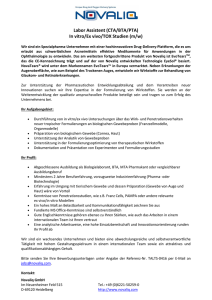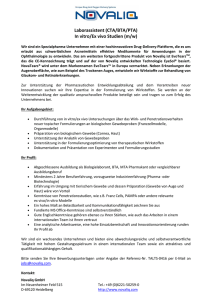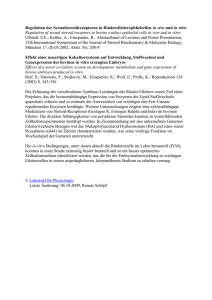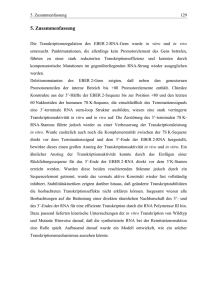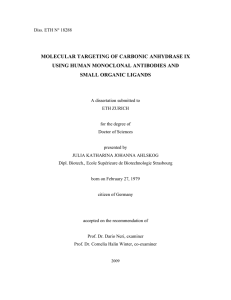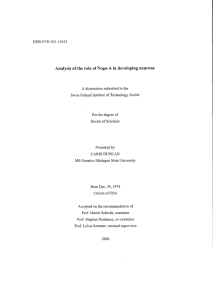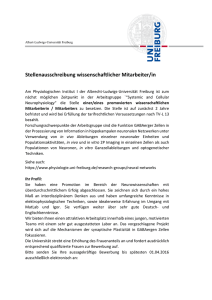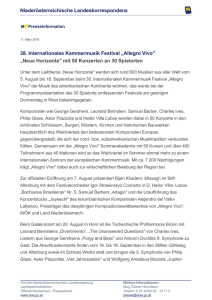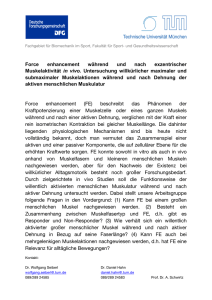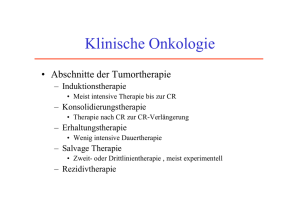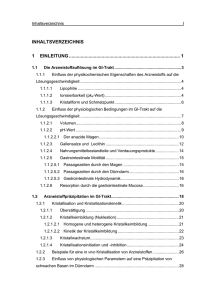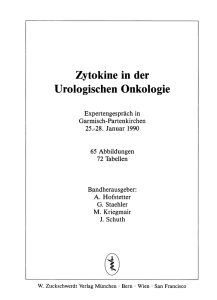the humoral immune response to hiv and its - ETH E
Werbung
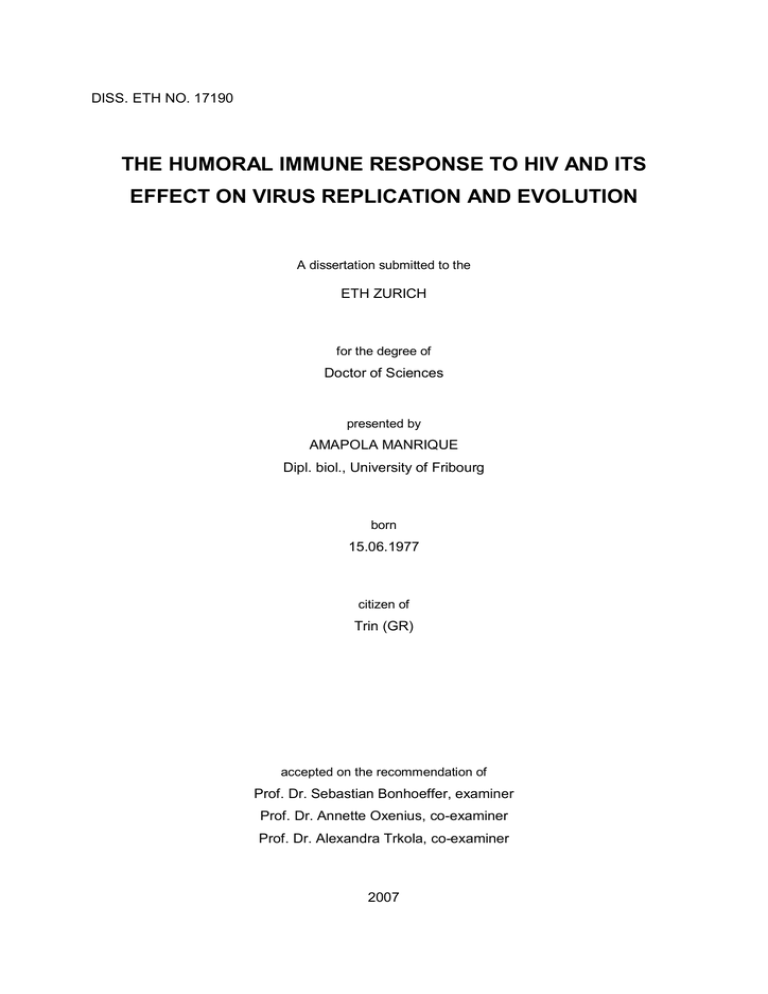
DISS. ETH NO. 17190 THE HUMORAL IMMUNE RESPONSE TO HIV AND ITS EFFECT ON VIRUS REPLICATION AND EVOLUTION A dissertation submitted to the ETH ZURICH for the degree of Doctor of Sciences presented by AMAPOLA MANRIQUE Dipl. biol., University of Fribourg born 15.06.1977 citizen of Trin (GR) accepted on the recommendation of Prof. Dr. Sebastian Bonhoeffer, examiner Prof. Dr. Annette Oxenius, co-examiner Prof. Dr. Alexandra Trkola, co-examiner 2007 Research summary RESEARCH SUMMARY This thesis focuses on two different mechanisms of the humoral immune defence against HIV-1 in humans and its effect in virus replication and evolution, neutralisation and antibody-dependent cellular cytotoxicity (ADCC). Development of HIV-specific antibodies in an infected individual happens shortly after infection, neutralising antibodies appear later but are thought to play an important role in disease containment. However, the role of antibodies that mediate effector functions (complement and ADCC) remains largely unclear. The thesis presented here, is structured in two parts that deal with different mechanisms of antibody responses. The first part reflects work on establishing a novel assay system to evaluate ADCC activity and its role in HIV infection. The second part analyses the effect of neutralising antibodies in viral replication and most notably evolution and development of resistant viral strains to the neutralising antibody response. The development of an in vitro assay that allows to measure in a sensitive and standardised way, ADCC mediated by HIV-specific antibodies is discussed in part 1. Since development of ADCC-mediating antibodies in patients occurs very early in infection together with the emergence of HIV specific cytotoxic T lymphocyte response, we aimed to develop a method that will allow us to investigate the influence of ADCC on disease progression. Monitoring changes in ADCC-antibody titres during the evolution of disease, would allow deriving a better understanding of the timing of these antibody responses in comparison to neutralising antibodies and estimating the respective impact of these mechanisms. Measuring ADCC in a system that most closely resembles in vivo conditions and allows assessment of activity against autologous patient virus, has not been developed previously and has proven challenging. The current work presents a thorough analysis of parameters in the development of the assay and succeeds in presenting an optimised strategy that allows measuring ADCC against primary HIV infected cells by flow cytometry. The second part of this work is based on a previous study conducted in our lab where we assessed the ability to induce immune selection in vivo to evaluate the impact of the neutralizing antibodies 2G12, 2F5 and 4E10 against HIV-1 in vivo. During passive immunisation all patients harbouring 2G12 sensitive strains developed escape mutants to this antibody while no relevant changes in the sensitivity to the 5 Research summary monoclonal antibodies (MAb) 2F5 and 4E10 occurred. These results where confirmed by sequence analysis of the membrane proximal external region (MPER) where the epitopes of these two MAb are located. We performed a detailed sequence analysis of the 2G12 resistance pattern of viral strains from 13 patients that emerged in vivo following immunisation, demonstrating that resistance is dependent on five N-linked glycosylation sites that form the antibody’s epitope. Additional detailed clonal analysis of the MPER of virus derived from three patients confirmed that in vivo no changes in the epitopes of 2F5 and 4E10 occurred. To investigate if this disparity in escape mutant generation reflects that 2F5 and 4E10 antibodies were ineffective in vivo or if alternatively, patient virus strains were coherently refractory to changes in the relevant regions of the MPER, we also performed in vitro escape mutant studies. To this end primary viruses were derived from four patients before the passive immunisation trial and subjected to immune selection with the three antibodies in vitro. We found that escape to 2G12 occurs also rapidly in vitro. Nevertheless, although resistance conferring mutations also were strictly found in the 2G12 core epitope, they differed in most cases from the resistance mutations found in vivo. Additionally, in contrast to the in vivo situation, 2F5 and 4E10 escapes can emerge in vitro although less frequently than 2G12 escapes. 4E10 resistant mutants were the most difficult to generate and frequently resulted in abortive infection or in viral mutants with impaired replicative capacities. Sequence analysis of the MPER generated in vitro mutants revealed changes in the respective epitopes of the antibodies and confirmed phenotypic resistance. In conclusion viruses preserved sensitivity to 2F5 and 4E10 in vivo despite the ability of the isolates to tolerate mutations in the epitope of these antibodies in vitro, however gain of resistance may be difficult to attain and can result in loss of infectivity and replication capacity. 6 Zusammenfassung ZUSAMMENFASSUNG Die vorliegende Dissertation behandelt verschiedene Mechanismen der humoralen Immunantwort gegen das Humane Immundefizienz-Virus vom Typ 1 (HIV-1) und deren Auswirkungen auf die Replikation und Evolution des Virus, die Neutralisation und die durch Antikörper vermittelte zelluläre Zytotoxizität (ADCC). Die vorliegende Arbeit befasst sich mit den unterschiedlichen Mechanismen der Antikörperantwort und ist zweigeteilt. Der erste Teil behandelt Versuche zur Etablierung eines neuen Assay-Systems, um die ADCC-Aktivität und ihre Rolle in der HIV Infektion zu evaluieren. Der zweite Teil analysiert den Effekt von neutralisierenden Antikörpern auf die Virusreplikation und vor allem auf die Evolution und Entwicklung von Virusstämmen, die gegen diese Antikörperantworten resistent sind. Begonnen wurde mit der Entwicklung eines in vitro Assay-Systems, welches auf sensitive und standardisierte Weise, die durch HIV-spezifische Antikörper ausgelöste ADCC bestimmt. Auf der Tatsache beruhend, dass ADCC verursachende Antikörper zusammen mit den zytotoxischen T Lymphozyten in Patienten früh nach der Infektion entstehen, setzten wir uns das Ziel, eine Methode zu entwickeln, in der man die ADCC während des Krankheitsverlaufes verfolgen kann. Dadurch könnte die Entwicklung und den Einfluss dieses Mechanismus auf die HIV-Krankheit besser verstanden werden und schliesslich mit der neutralisierenden Antikörperantwort verglichen werden. Dies würde zu besseren Kenntnisse über die Entstehung und der Bedeutung beider Antikörperantworten führen. Ein System, in der man die ADCCAntwort direkt aus dem autologen Patientenvirus messen kann und das gleichzeitig am ehesten den in vivo Konditionen entspricht, wurde bis jetzt noch nicht entwickelt und hat sich als sehr anspruchsvoll gezeigt. Diese Arbeit legt eine detaillierte Analyse der benötigten Parameter für die Entwicklung eines solchen Assay-Systems dar. Es zeigt eine optimierte Strategie, in der man mittels Durchflusszytometrie die ADCC direkt auf primär infizierten Zellen messen kann. Der zweite Teil der Arbeit beruht auf einer passiven Immunisierungsstudie mit 14 HIV-Patienten die in unserer Gruppe durchgeführt wurde. In dieser Studie wurde in vivo die Wirksamkeit von drei neutralisierenden Antikörpern (2G12, 2F5 und 4E10), HIV zu unterdrücken, getestet. Alle Patienten, die vor der Immunisierung 2G12 7 Zusammenfassung sensitive Stämme aufwiesen, entwickelten Resistenzen gegen diesen Antikörper. Im Gegensatz dazu sind keine Sensitivitätsveränderungen bei den anderen zwei Antikörpern aufgetreten. Dies wurde durch Sequenzierung der externen proximalen Membranregion (MPER), in der die Epitope beider Antikörper liegen, bestätigt. In dieser Arbeit wurde von 13 Patienten, HIV-Stämme aus verschiedenen Zeitpunkten der Immunisierungstudie isoliert und die Region in der 2G12 bindet, sequenziert. Dank einer detaillierten Analyse dieser Region in den auftretenden Stämmen konnte ein Muster der 2G12-Resistenz erstellt werden. Ausserdem konnten wir nachweisen, dass die 2G12-Resistenz von den fünf bekannten Ngebundenen Glykosilierungsstellen abhängig ist. Bei drei Patienten wurde durch zusätzliche klonale Analyse der MPER-Region bestätigt, dass in vivo keine Resistenzveränderungen in den Epitopen von 2F5 und 4E10 vorgekommen sind. Als nächstes wurde untersucht, ob die MPER-Antikörper in vivo wirkungslos waren oder ob Viren in dieser Region keine Mutationen ertragen. Erreicht wurde dies, indem HIVStämme, die von vier der Versuchspatienten vor der Studie isoliert wurden, in vitro einem Selektionsdruck durch einen der drei Antikörper ausgesetzt wurden. Wie in vivo entstehen in vitro schnell Resistenzmutationen gegen 2G12. Auch in den in vitro Mutationen hat sich die 2G12 Resistenz auf das Epitop beschränkt, trotzdem waren das Resistenzmuster meistens anders als die in vivo aufgetretenen. Im Gegensatz zu den in vivo Erkenntnissen, sind bei den in vitro Experimenten auch Viren entstanden, die Mutationen aufwiesen die zu einer Resistenz gegen 2F5 und 4E10 führen. Diese Mutationen traten aber seltener als 2G12 Resistenzmutationen auf und konnten zu Replikationsdefiziente Viren führen. Sequenzanalysen haben die phenotypischen Resistenzen bestätigt und gezeigt, dass die Mutationen an den respektiven Epitope der MPER-Antikörpern aufgetreten sind. Obwohl Viren Veränderungen im MPER erlauben sind in vivo keine 2F5 oder 4E10 Mutationen entstanden. Allerdings könnte das Erlangen von Resistenz schwierig sein, da dies zu Replikationkapazitäten oder zu Verlust von Infektiosität führen könnte. 8 verminderten
